Wildfire Smoke Health Effects: Symptoms, Risks, and Prevention Tips
Research suggests wildfire smoke may contribute to thousands of new heart-related health cases among adults in the U.S. each year. This highlights wildfire smoke health effects as well as the urgent need for better air quality measures and wildfire prevention strategies.

Wildfire smoke affects health
What is in wildfire smoke?
Wildfire smoke is a complex and harmful mixture of pollutants, including:
-
Particulate Matter (PM2.5): Tiny particles that can penetrate deep into the lungs and affect overall respiratory health.
-
Carbon Monoxide (CO): A colorless, odorless gas that reduces oxygen delivery in the body.
-
Volatile Organic Compounds (VOCs): Chemicals that can irritate the eyes, nose, and throat.
-
Nitrogen Oxides (NOx): Gases that contribute to ground-level ozone and respiratory problems.
-
Hazardous Air Pollutants: Including formaldehyde and benzene, both linked to long-term health risks.
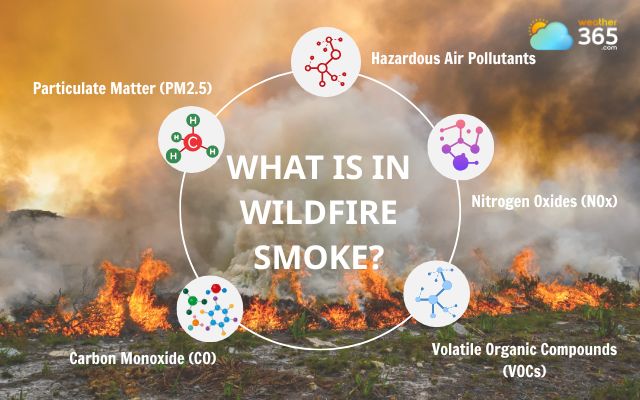
Component of wildfire smoke
Wildfire smoke health effects
Here are the primary health effects of wildfire smoke.
Respiratory Problems
Wildfire smoke can significantly affect human respiratory health due to its toxic mix of fine particulate matter (PM2.5), carbon monoxide, and hazardous gases.
One of the most immediate impacts is irritation of the eyes, nose, throat, and lungs, leading to coughing, wheezing, sore throat, and shortness of breath.
People with pre-existing respiratory conditions like asthma, COPD, or emphysema face an even greater risk, as smoke exposure can trigger severe asthma attacks, worsen COPD symptoms, and increase hospitalizations.
Prolonged exposure to wildfire smoke can increase the likelihood of respiratory conditions such as bronchitis and reduced lung function.
Even healthy individuals can experience reduced lung function, fatigue, and difficulty breathing when air quality is poor for prolonged periods.
Repeated or prolonged exposure raises the risk of lasting respiratory health problems, especially for children, the elderly, and outdoor workers.
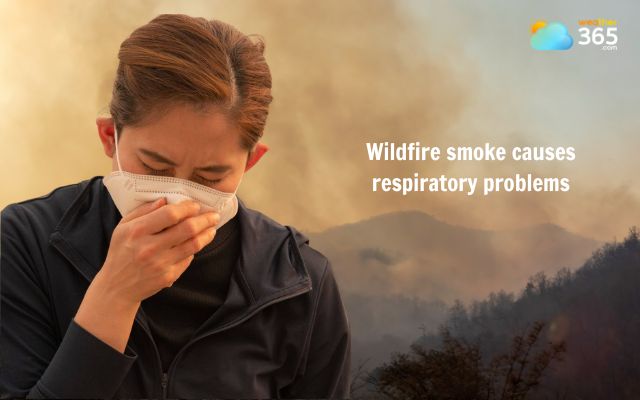
Wildfire smoke can lead to respiratory problems
Cardiovascular Problems
Wildfire smoke health effects include serious cardiovascular risks.
Fine particulate matter (PM2.5) in smoke can enter the bloodstream, triggering inflammation and damaging blood vessels.
This significantly increases the risk of heart attacks, strokes, and irregular heartbeats, particularly in individuals with pre-existing heart conditions.
People with heart failure, coronary artery disease, or high blood pressure may experience worsened symptoms during heavy smoke exposure.
Protecting heart health during wildfire events is crucial, especially for vulnerable populations.
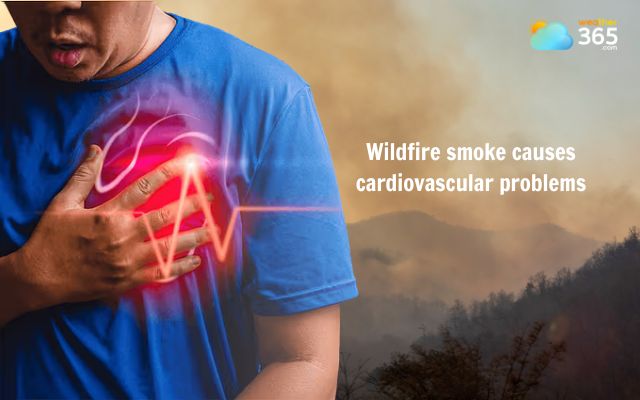
Wildfire smoke causes more severe cardiovascular problems
Eye and Nose Irritation
Wildfire smoke often causes eye and nose irritation, resulting in burning or watery eyes, sneezing, and a runny nose.
Fine particles and chemicals in the smoke irritate sensitive tissues.
They make these symptoms common even in healthy individuals and worse for those with allergies or respiratory conditions.
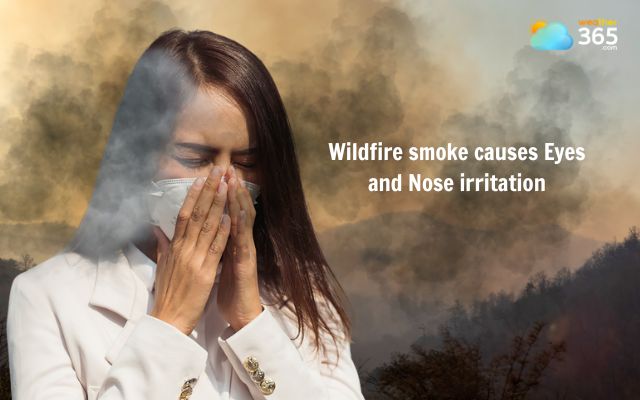
Wildfire smoke causes eye and nose problems
Neurological Effects
Wildfire smoke exposure may have neurological effects, although research is still ongoing.
Inhaling fine particles and toxic compounds from smoke can impact the nervous system, leading to symptoms such as headaches, dizziness, fatigue, and difficulty concentrating.
Long-term exposure may increase the risk of cognitive decline, highlighting the importance of minimizing smoke exposure.
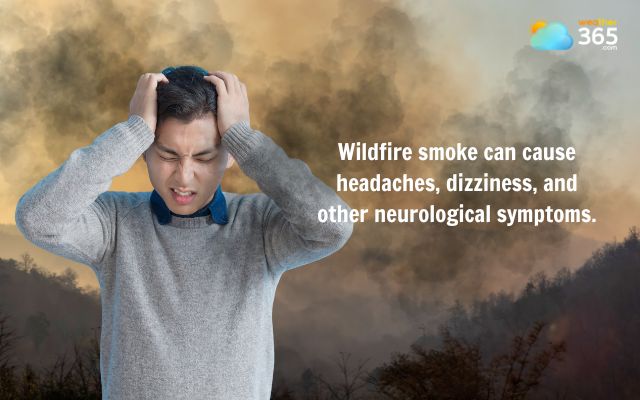
Wildfire smoke leads to neurological symptoms
Mental Health Impacts
Wildfire smoke exposure not only affects physical health but also takes a toll on mental well-being.
Extended smoke exposure and the stress of wildfire events can affect mental well-being, sometimes leading to heightened anxiety or emotional strain.
Those who lose their homes, loved ones, or livelihoods face heightened psychological distress.
This emphasizes the need for mental health support during and after wildfire events.
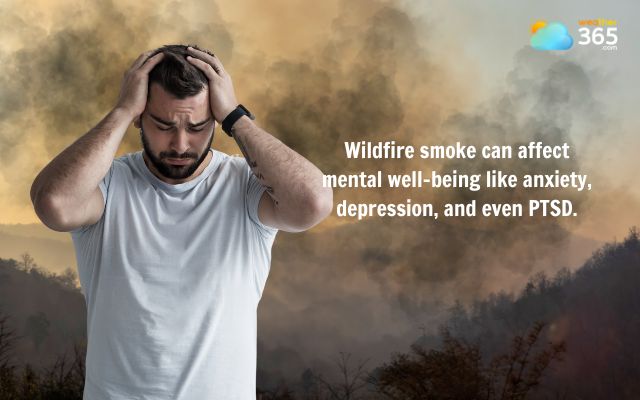
Wildfire smoke can lead to anxiety, depression, and even PTSD
Who is most at risk?
During heavy wildfire smoke events, everyone is at risk, regardless of age or health.
However, some groups are more vulnerable due to higher exposure or increased sensitivity to smoke.
Also, check on neighbors, friends, and family who may be more affected.
Groups most at risk from wildfire smoke health effects include:
-
Seniors and infants
-
Indigenous Peoples
-
Pregnant women and individuals
-
People with chronic health conditions (e.g., asthma, heart disease, diabetes, cancer)
-
Smokers
-
Outdoor workers and firefighters
-
People living in rural, remote, or low-income areas
-
People taking strenuous outdoor exercise
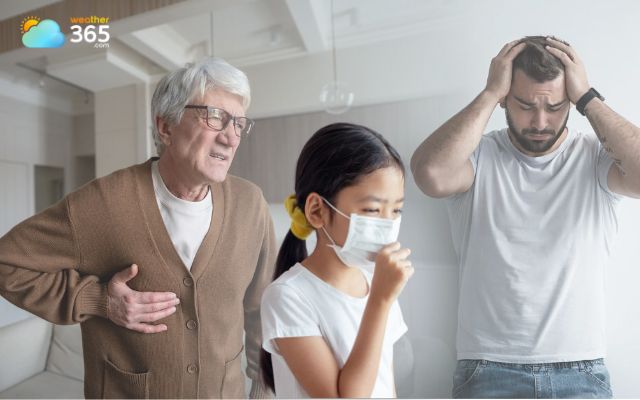
People are most at risk of wildfire smoke health effects
How to reduce wildfire smoke health effects?
To reduce the health effects of wildfire smoke, you need to limit exposure and have a safe indoor environment.
Stay indoors as much as possible, keeping all windows and doors closed to prevent smoke from entering your home.
Use air conditioning in recirculation mode and consider using a high-efficiency air purifier or HVAC system with a clean HEPA filter to remove harmful particles from the air.
Keep in mind that increased breathing rates can draw more pollutants into your lungs. Therefore, if you must go outside, wear a properly fitted N95 or KN95 mask.
Those with pre-existing conditions such as asthma, COPD, or heart disease should keep an emergency supply of medications on hand and follow medical advice closely.
Use prescribed inhalers as directed and monitor symptoms for any signs of worsening. Staying hydrated helps keep your respiratory system moist, reducing irritation from smoke inhalation.
Monitor local air quality indexes (AQI) and wildfire updates through trusted sources to know when conditions improve or worsen.
Set up a “clean room” in your home, preferably a bedroom or living room, with a HEPA air purifier and sealed windows and doors.
This safe space helps protect vulnerable individuals, such as children, seniors, pregnant women, and those with chronic illnesses, from harmful wildfire smoke during severe events.

Create a “clean room” for vulnerable people to stay safe
If smoke infiltration becomes unavoidable, consider temporarily relocating to areas with better air quality, such as public buildings or community centers with filtered air.
Taking these steps can significantly reduce short- and long-term health risks associated with wildfire smoke exposure.
You may also like this: Wildfire Safety Tips
Conclusion
Wildfire smoke health effects can be negative, and minimizing exposure is the best way to stay safe. Taking proactive measures helps reduce both short- and long-term impacts.
Frequently Asked Questions (FAQs)
Related post

What is a wildfire? Characteristics, Types, and Facts you should know
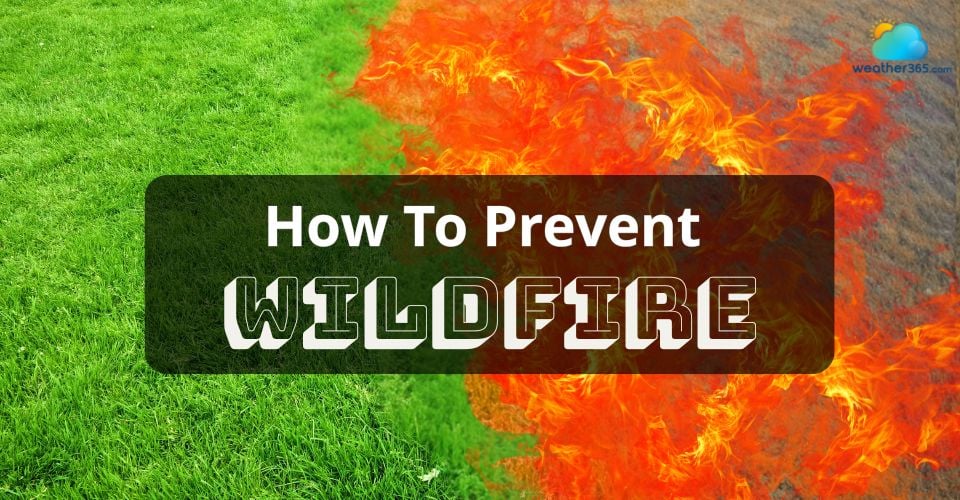

0 Comment
Leave a comment
Your email address will not be published. Required fields are marked *